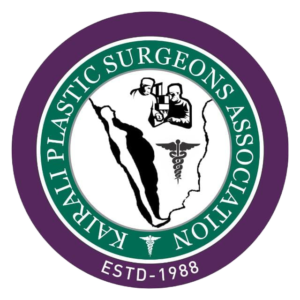
- Abdominal Wall Reconstruction
- Acute Trauma Management
- Breast Reconstruction
- Brachial Plexus and Peripheral Nerve Surgeries
- Burns And Reconstructive Surgeries
- Chest Wall Reconstruction
- Cleft And Craniofacial Surgeries
- Congenital Deformities
- Diabetic Foot & Its Management
- Gender Confirmation Surgeries
- Hand Surgeries
- Head & Neck Reconstruction
- Micro Vascular surgery
- Negative Pressure Wound Therapy
- Pressure Sore And Reconstructive Procedures
- Regenerative Medicine
- Tissue Expansion
INTRODUCTION:
The patients, in whom the abdomen can’t be closed primarily, make up the difficult category requiring abdominal wall reconstruction. In essence, defects more than 5cms require some reconstruction. Interventions can vary from simple coverage to reconstruction with dynamic functional abdominal wall muscles, depending on the size, type of tissue loss and degree of contamination.
Autologous tissue or biological grafts are the mainstay of successful abdominal wall reconstruction in settings with increased risk of infection.
PROCEDURE:
- COMPONENT SEPARATION-
It incorporates division or separation of the various abdominal wall components to assist closure. In other words, the rectus abdominis muscle is mobilized by separating some attachments selectively, so that tension is taken off midline. It may be used as a musculocutaneous or bipedicled flap.
- AUTOLOGOUS GRAFT:
Tensor fascia lata is the most commonly used autologous graft to close the abdomen. A maximum size of 28x14cms may be harvested at a time leaving about 5-10cms length at the donor site to maintain knee stability.
It can be used in contaminated fields as well.
- LOCAL FLAPS:
Local flaps to close the abdominal wall may be raised depending upon the anatomical location of the defect.
Upper 1/3 rd defects area usually closed using thoraco-epigastric flaps rais raised as a rotational flap.
Middle 1/3 rd defects usually require an iliolumbar bipedicular flap Lower 1/3 rd defects may be closed using varied options.Vastus lateralis muscle flaps and tensor fascia lata flaps are the more commonly used flaps for lower abdomen defects. Rectus femoris muscle flap may be raised as a pedicled flap, however, not used regularly, due to high donor site morbidity due to weakening of quadriceps femoris.
- OMENTUM:
Though not a first choice, the omentum may prove a valuable option when other choices are limited. Its major advantages include a wide flap with a reliable blood supply that can cover almost the whole of abdominal wall and perineum. However, requires additional mesh repair to prevent ventral hernia and skin grafting.
- FREE FLAPS:
With the advent of microsurgery, free tissue transfer offers a viable option for difficult abdominal wall closures. Its major advantages include wide flap may be harvested with limited donor site morbidity of adjacent abdominal wall and better perfusion of tissues. Includes anterolateral thigh flap, gracilis muscle flap and latissimus dorsi muscle flap area the usual flaps for free tissue transfer.
- TISSUE EXPANSION:
Tissue expansion provides full thickness coverage of the abdominal wall. However, it is a delayed closure technique requiring multiple or serial surgical interventions. Usually, can be used for planned and elective procedures and not a viable option for emergency situations.
It, however, provides better cosmetic match with well perfused tissue and fewer scars.
- BIOPROSTHETICS:
It is a comparatively newer filed made possible with the advent of genetic engineering. It may be considered as an option when locally available tissue is limited or may lead to greater donor site morbidity or failure of any or more of these. Options include-
- Human Acellular dermis-
Available in small sheets, hence suitable for small defects, leads to lesser adhesions.
- Porcine Submucosa-
Available as larger sheets, but higher incidence of adhesions.
RISKS:
- Long hospital stay: usually associated with co-morbidities, infection and placement of drains and also depending upon the presentation (whether emergency/ elective).
- Seroma- most common complication, due to wide undermining of abdominal flaps especially in component separation. Few may resolve over time, while some require drainage.
- Delayed wound healing and infections as with any other surgery.
- Recurrence of hernia
Chronic pain- usually associated with mesh repairs.
RECOVERY:
Recovery usually takes one week to 10days of hospital stay depending upon the co-morbidities. Sutures may be removed by 10 days to 2weeks time. Activities need to be limited initially including lifting, bending, etc and normal routine heavy work may be resumed after 3 months. Light work may be resumed as soon as possible.
